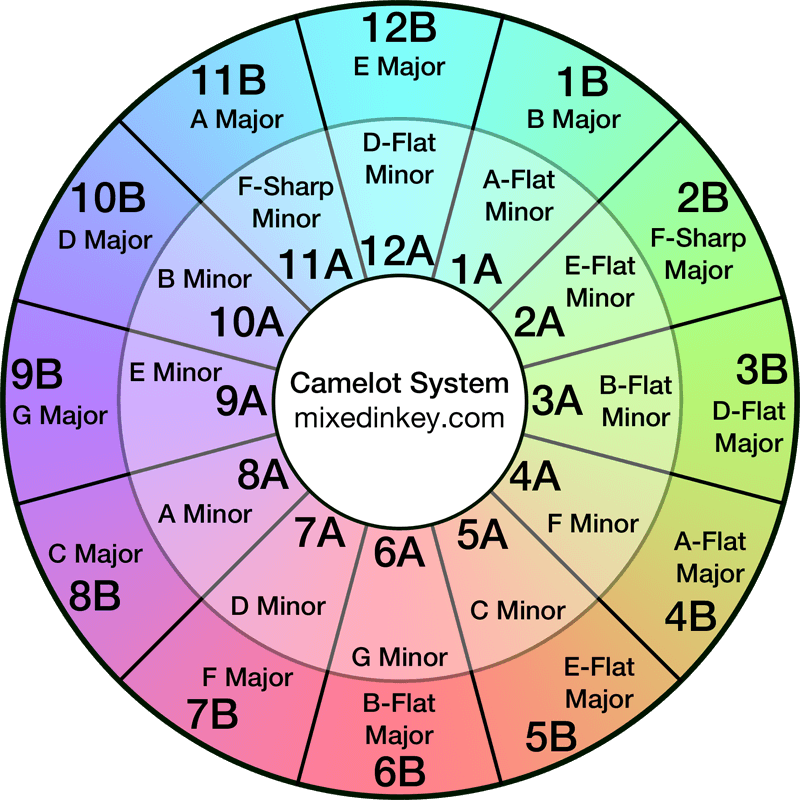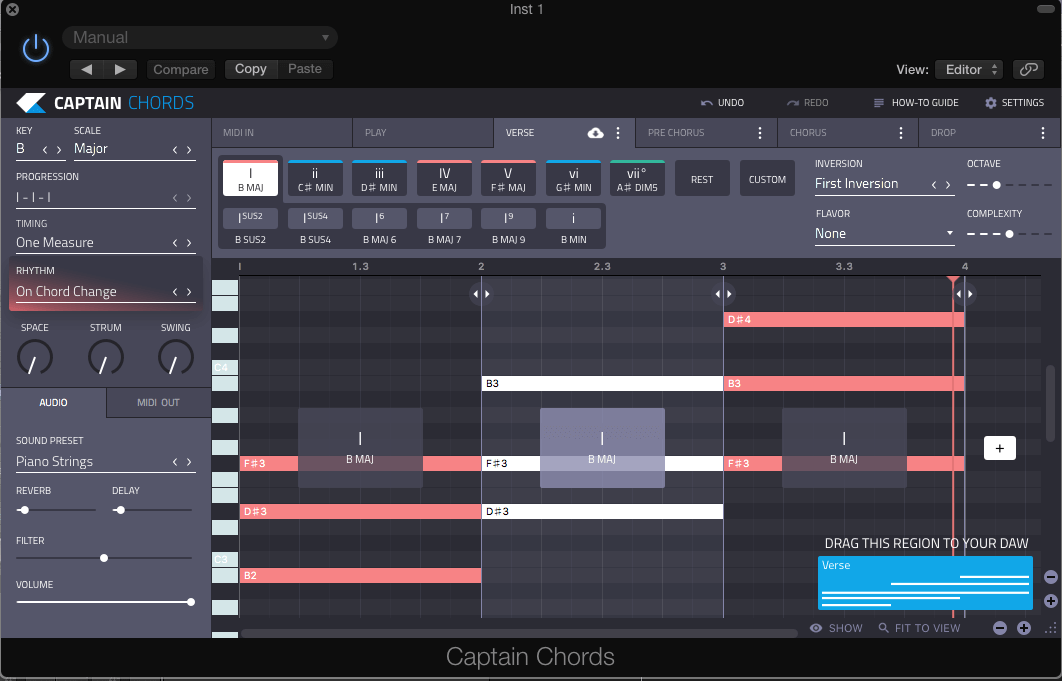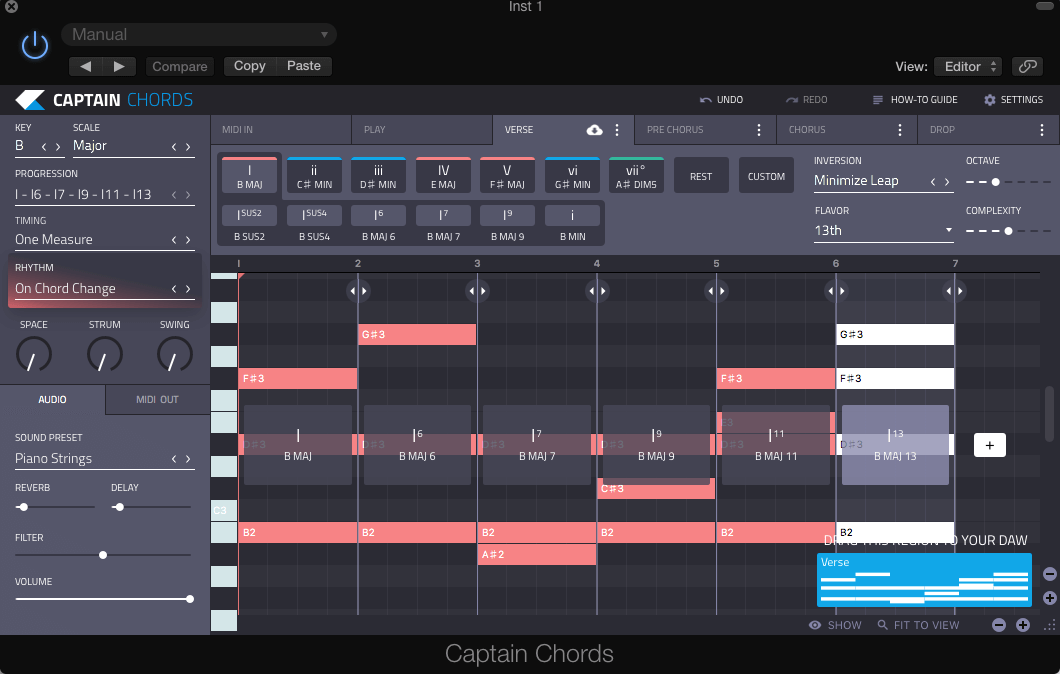The Chord of B Major
A short guide to a most charismatic chord. Find out different ways to play it, what styles of music best suit it and what notes are in its diatonic scale.

B for Bold
Chords have characteristics. Personalities, almost. The composer Schubert wrote a book about this, in which he characterized B Major as ”Strongly coloured, announcing wild passions, composed from the most glaring colors. Anger, rage, jealousy, fury, despair and every burden of the heart lies in its sphere.”. Strong stuff indeed!
Try playing B Major on your keyboard or guitar and revel in its majestic, strident tone. You can imagine a Queen entering her palace to this chord.
Behold the B
B Major is a mighty chord. It may not be best suited to melancholic songs, but it can be the root for a wide range of styles and create a highly uplifting, transcendent track. From the magnificent chill of Bon Iver – Calgary, to the rock theatre of Guns ‘n Roses – Live and Let Die and even including one of the biggest hits of all time Michael Jackson’s Billie Jean it’s clear that B Major is capable of inspiring truly epic songwriting.

Let’s analyze B Major. Like all tonal chords, it’s generic form is a triad – or three notes played simultaneously – and it starts with it’s own root note, which is, of course, B.
The magic number
Every triad starts with the root note and ends with a perfect fifth – five notes up from the root. The middle note is really important as it decides whether the chord is Minor or Major. Check out this simple chart below:
| B Chord | Root (AKA ‘Tonic’) | Interval 1 | Interval 2 |
|---|---|---|---|
| Major | B | D# | F# |
| Minor | B | D | F# |
The chart shows us the simple difference between the B Major and B Minor chord. It also tells us that B Major consists of three notes: D, D Sharp and F Sharp.
Write chords faster with Captain Chords
- Write your own chord progressions
- Apply rhythms to your chords
- Set your Key and Scale for the entire song
- Explore different chords and discover your favorite combinations
- Compose music and write your own songs
- One touch plays 3 notes of the chords
Relatively speaking
Every Major chord has a relative Minor chord that complements it. If you’ve ever seen the Mixed in Key Harmonic Mixing Wheel (AKA the ‘Camelot’ Wheel) you’ll be familiar with the way chords ‘connect’ based on their position on the wheel.

The outer ring has the Major chords, the inner ring has Minors. Look at the top left of the wheel. 1B = B Major, and is positioned next to 1A = A-Flat Minor. These are ‘relative’ chords – very useful when writing chord progressions as you know they’ll sound ‘correct’ even when played on top of one another.
Minimize the Leap
When playing B Major, you can change the way it’s played and play either of the triad notes at the bottom. Check out the video example below, where you can see and hear the difference between the three ways of playing the same chord. The sound is almost the same and the pitch is identical. These are sometimes referred to as inversions.
These inversions are scored in different ways:
| Root | First Inversion | Second Inversion |
|---|---|---|
| D# | F# | B |

Why invert?
Inverting chords gives musicians different ways of playing the same chord in different positions on the keyboard – minimizing the distance between chords. That’s where the term ‘Minimize the leap’ originates – something you can easily replicate in Captain Chords.
Flavors and Suspended Chords
We can make B Major more complex and interesting by adding additional notes. It’s like adding spice to your chord – so be careful not to overdo it.
These additional notes come from the overall diatonic scale of the note, which takes a bit of time to learn.
Each one adds its own flavor, which is why they are sometimes referred to as flavors. It’s super simple to add these flavors in our Captain Chords software – you just select the flavor you want and audition it live within your composition.

The diatonic scale of B Major
Flavor:
| Root | Third | Fifth | 6th | 7th | 9th | 11th | 13th |
|---|---|---|---|---|---|---|---|
| B | D# | F# | G# | A# | C# | E | G# |
Suspended:
| Root | Third | Suspended 2nd | Suspended 4th | Fifth |
|---|---|---|---|---|
| B | D# | C# | E | F# |
There are fewer potential suspended notes, since they fit in between the root and fifth. There are two options, in fact, which makes sense if you think about it: 1 is taken by the root note, B. 3 is taken by the first interval, and 5 is taken by the perfect fifth. This leaves just 2 and 4 as possible destinations for our suspended notes.
Write your own Chords using Captain Chords
It’s super easy to create your own ideas from scratch. Visit the official Chords homepage and see how it will help you explore music and write your own original productions.
